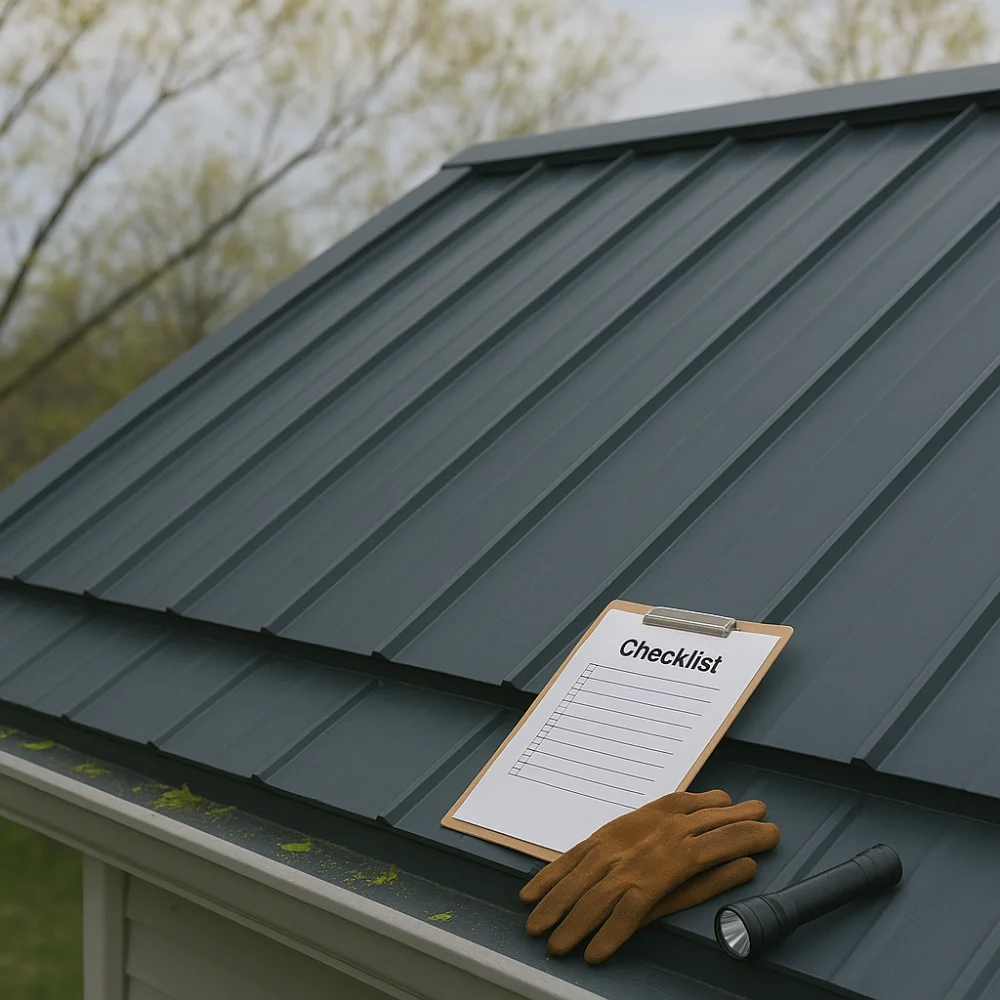
A seasonal roof inspection checklist for spring should include several key elements. Start with the exterior roof surface, checking for damaged shingles and signs of wear. Inspect flashing around chimneys and vents for cracks. Assess gutters for debris and verify downspouts direct water away from the foundation. Evaluate attic ventilation and insulation quality. Look for signs of water leaks or damage inside the home. A thorough inspection helps maintain your roof's health and durability. Uncover more effective strategies for your roof care.
A thorough inspection of the exterior roof surface is essential for maintaining a home's integrity and preventing costly repairs. Homeowners should look for loose, missing, or damaged shingles, as these can lead to leaks. Additionally, signs of blistered, curled, or split shingles indicate aging or heat damage, while cracked shingles can permit water penetration. Inspecting for moss growth and animal intrusion is also crucial, as these issues can compromise the roof's structure. Moreover, assessing the ventilation system performance is critical, as proper airflow can enhance shingle longevity. Inspecting for winter damage is also vital to ensure that any adverse effects from the previous cold season are addressed. Regular inspections not only safeguard the roof but also contribute to the overall health of the home. Furthermore, using materials made for Texas weather can significantly improve the durability and performance of your roof. Homeowners might consider various shingle replacement options if extensive damage is found.
While ensuring a roof remains watertight, checking the integrity of flashing and seals is imperative for preventing leaks and water damage. Homeowners should focus on these key areas:
Paying special attention to skylight flashing issues can prevent water intrusion, making regular inspections essential. Additionally, be aware that heavy snow loads can exacerbate any existing flashing or seal issues, leading to more severe damage. By addressing these components, homeowners can safeguard their roofs against potential damage, ensuring a dry and secure living environment.
A thorough assessment of gutters and downspouts is essential for maintaining a home's integrity. This includes effective debris removal techniques to clear out leaves and other blockages, along with drainage flow testing to guarantee water is directed away from the foundation. Regular attention to these components can prevent costly damage and verify proper water management during seasonal changes. Additionally, clogged gutters can lead to foundation or siding problems if not addressed promptly. Ensuring you have high-performing materials in your home can further enhance its durability against seasonal weather challenges.
Effective debris removal techniques are essential for maintaining the integrity of gutters and downspouts, as they play a crucial role in preventing water damage to roofs and homes. Homeowners should prioritize the following methods:
Regular inspections, combined with leaf accumulation prevention measures like trimming tree branches and installing gutter guards, guarantee gutters remain clear. By adopting these techniques, homeowners can effectively protect their roofs and prolong their lifespan.
Proper drainage flow testing is essential for guaranteeing the efficiency and reliability of gutters and downspouts. Utilizing methods such as air and water testing, homeowners can identify leaks or blockages that may compromise drainage. An annual testing schedule, part of effective preventative maintenance tips, helps maintain optimal performance. Air testing pressurizes the system, while water testing simulates real conditions by filling the system with water to assess flow rates. Accurate performance assessments prevent water accumulation, avoiding potential roof damage. By measuring flow rates based on pipe configurations, homeowners can determine if the existing drainage system is sufficient. Adhering to these testing practices ascertains a proactive approach to roof care, safeguarding property from costly repairs.
Regular ventilation and attic inspections are essential for maintaining a healthy home environment. A thorough evaluation can prevent costly issues down the line. Homeowners should focus on the following key areas:
When inspecting for signs of leaks and water damage, homeowners should start by identifying any water stains on ceilings and walls, as these are clear indicators of moisture issues. A close inspection of interior walls along with monitoring attic conditions can reveal hidden problems that may not be immediately visible. By remaining vigilant about these signs, homeowners can address potential leaks before they escalate into more serious damage.
How can one effectively identify water stains to prevent serious roof damage? Water stains are integral indicators of potential leaks, often appearing as yellowish-brown discolorations on ceilings or walls. To guarantee proper drywall damage examination and detect hidden leaks, consider the following checklist:
Ignoring these signs can lead to serious problems, including mold growth and structural damage. Addressing water stains promptly secures the integrity of the roof and the safety of the home.
Inspecting interior walls is an essential step in identifying signs of leaks and water damage that may threaten the integrity of a home. Homeowners should look for vertical stains and discolored patches, which can indicate hidden moisture detection. Wallpaper damage evaluation is pivotal; wallpaper that bubbles or peels often points to water intrusion. Inspect for peeling paint, as this may signal moisture accumulation behind the surface. Additionally, odors of mold or mildew may indicate dampness, necessitating immediate attention. Homeowners should also be aware of structural issues, such as sagging ceilings or cracks in walls, which can result from prolonged water exposure. A thorough inspection can prevent costly repairs and maintain a safe living environment.
A thorough evaluation of attic conditions is essential for homeowners seeking to prevent water damage and its associated risks. Monitoring the attic can reveal critical issues before they escalate. Homeowners should focus on:
Why wait for problems to arise when proactive measures can safeguard the integrity of a roof? Regular preventative maintenance and timely repairs are indispensable for extending the roof coating lifespan and ensuring lasting protection. Homeowners should prioritize shingle replacement for any damaged, missing, or curled shingles, as this prevents further issues. Additionally, inspecting and repairing flashing around chimneys and vents is vital to avoid leaks. Clearing gutters and considering gutter guard installation can also prevent clogs, ensuring proper water flow. Applying a protective roof coating can significantly enhance the durability of shingles, providing an extra layer of defense against the elements. Taking these proactive steps will help maintain a healthy roof and protect the home for years to come.
Scheduling professional inspections is a pivotal step in sustaining a roof's health and longevity. To warrant optimal care, consider the following points:
In summary, conducting a thorough seasonal roof inspection is essential for maintaining the integrity of your home. By carefully examining the roof's exterior, flashings, gutters, and ventilation, you can uncover potential issues before they escalate. Addressing any signs of leaks and scheduling professional evaluations ensures effective protection for your home. These proactive steps not only improve your roof's functionality but also foster peace of mind. Committing to regular maintenance today will save you both time and money down the line, securing a safe and comfortable environment for years to come.
At TriStar Built, we understand the importance of quality craftsmanship and clear communication. As a locally owned and insured construction company based in North Texas, we pride ourselves on building lasting relationships with our subcontractors and providing client-focused service that you can trust.
It's recommended to inspect your roof at least twice a year, ideally in spring and fall. A spring roof inspection checklist is especially useful after the harsh winter months, as snow, ice, and fluctuating temperatures can cause hidden damage. Regular inspections not only help in identifying roofing issues early but also play a vital role in protecting your home and extending the lifespan of your roof. Spring is the perfect time to schedule this maintenance and ensure your roofing system remains in top condition.
To conduct a thorough roof inspection, you’ll need a sturdy ladder, safety gear like harnesses and gloves, and a flashlight to check sagging or uneven areas or signs of leaks. However, for a detailed spring roof inspection checklist, it's often best to hire a professional roofer who can safely access vulnerable spots, detect missing shingles, and recommend necessary repairs to maintain the life of your roof.
Some spring roof maintenance checklist items, such as clearing debris or checking gutters, can be done by a handy homeowner. But for spotting subtle issues like signs of roof damage or deteriorating materials, it's wise to rely on roofing services. A licensed roofing company can inspect the roof and foundation interaction, confirm proper ventilation prevents heat and moisture buildup, and advise on how to keep your roof performing efficiently.
Indicators that you may need a roof replacement include extensive roof damage, persistent leaks, or a visibly sagging or uneven roof. If you notice curled or missing shingles and dark streaks from water infiltration, it could signal the end of the lifespan of a roof. Ignoring these signs may lead to more significant structural issues or even premature roof replacement, so a thorough roof inspection is essential.
Severe winter weather and seasonal transitions impact the roofing system through cycles of freezing, thawing, and UV exposure. These conditions cause roofing materials to expand and contract, creating cracks and weak points. Over time, this can lead to roof degradation and reduced energy efficiency. Spring inspections help you catch these issues early, providing roofing solutions that ensure your roof continues to perform and extend the life of your investment.

Whether you’re remodeling a home, expanding a business, or starting from the ground up, TriStar Built is here to guide you every step of the way. With a focus on craftsmanship, communication, and results that last, we make the construction process clear, smooth, and worth every investment.

LOCATION: 2126 James Street, Denton, TX 76205
PHONE: (940) 381-2222
© 2025 TRISTAR BUILT - ALL RIGHTS RESERVED | WEB DESIGN & SEO BY: Authority Solutions®